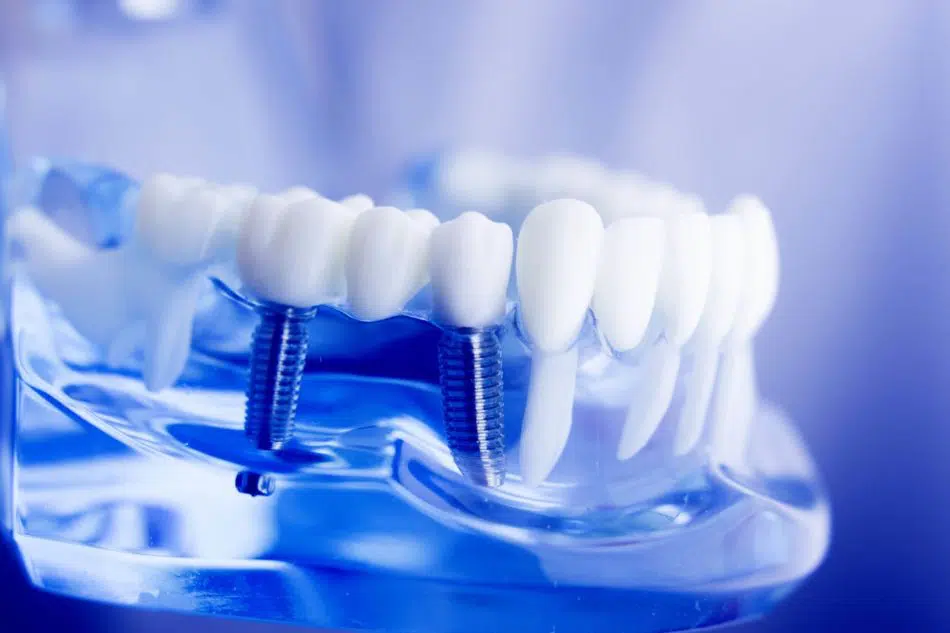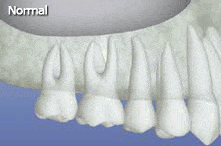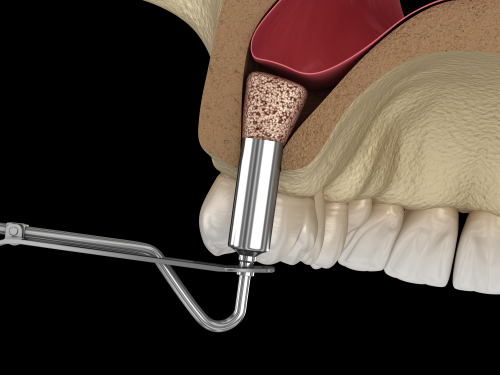Sinus Lift in Forney, TX
A sinus lift, also known as sinus augmentation or sinus graft, is an oral surgery that is necessary for dental implants. Some of the roots of the natural upper teeth extend up close to the maxillary sinuses. A sinus lift will be recommended if a patient doesn’t have the bone support for a dental implant.
The procedure aims to grow bone in the maxillary sinus floor above the gum line’s bony ridge that anchors the teeth in the upper jaw. By strengthening and growing bone in this location, dental implants can be secured in the new bone growth. Dentists specializing in oral maxillofacial surgery, like Dr. Draper & Dr. Gibbins, are experts at handling the sinus lift procedure.

Sinus Lifts With Our Dental Implant Specialists in Forney, TX

The maxillary sinuses, located behind your cheeks and on top of the upper teeth, are empty, air-filled spaces. Some of the roots of the natural upper teeth extend up into the maxillary sinuses. When you lose upper teeth, it’s common for only a slender bone wall to separate the maxillary sinus from the mouth. Dental implants, which provide the foundation for replacement teeth, require adequate bone for stability. In cases where the sinus wall is thin, a sinus lift in Forney becomes necessary for the successful implantation of the tooth-restoration materials. While this procedure might sound overwhelming, Dr. Draper and Dr. Gibbins are dental implant specialists and have a lot of experience performing this procedure, so you can rest assured you are in expert hands.
Why Consider a Sinus Lift Procedure?
To ensure the long-term success of dental implants, the quality and volume of the jawbone are crucial. If you’ve suffered bone loss due to injury, periodontal disease, or other factors, a sinus lift surgery can help. By elevating the sinus floor, this procedure encourages new bone growth, allowing many patients to opt for dental implants. Previously, they might have only had the option of wearing dentures.
Am I a Candidate for a Sinus Lift Surgery?
You might benefit from sinus lift surgery in Forney if you:
- Are missing multiple teeth in the back of your jaw.
- Lack a significant volume of bone in the rear of your jaw.
- Lost teeth due to congenital defects or conditions.
- Require support for dental implants but have lost most maxillary teeth.
Understanding the Sinus Lift Procedure
In the most common sinus augmentation procedure, a small incision is made on the premolar or molar region to expose the jawbone. A tiny opening is then made in the bone to gently elevate the sinus membrane. This created space is filled with bone grafting material, which might sometimes be derived from synthetic materials mimicking bone. After the bone is implanted, the incision is stitched up and the healing process begins. After several months of healing, the bone becomes part of the patient’s jaw, and dental implants can be inserted and stabilized in this new sinus bone.

There are instances when both sinus lift and implantation can occur concurrently. However, if the existing bone is insufficient, the augmentation takes precedence. After allowing the graft several months to mature, our seasoned doctors, Dr. Draper and Dr. Gibbons, can then place the implants.
A sinus augmentation is generally performed at Trinity Valley Oral Surgery & Dental Implant Center under local anesthesia and IV sedation for your comfort and peace of mind.
What Is the Recovery Process for a Sinus Lift?
Due to having been under anesthesia during the sinus lift surgery, you will need someone to drive you home. Post-procedure, you can expect to feel mild discomfort and potential swelling, but these can be managed. Applying ice can mitigate swelling and ease pain. A few patients might also notice minor nasal bleeding, but this isn’t alarming.
For a smooth recovery after your sinus lift procedure:
- Refrain from sneezing or nose-blowing to ensure graft stability.
- Take prescribed pain medications for swelling and congestion management.
- Finish the full course of any prescribed antibiotics to prevent infection.
- Use the recommended nasal spray and antimicrobial mouthwash.
- Attend follow-up check-ups at our Trinity Valley Oral Surgery & Dental Implant Center office. Dr. Draper or Dr. Gibbons will assess the healing process and ensure the graft’s success.
You will have a check-up appointment in our Trinity Valley Oral Surgery & Dental Implant Center office within 7-10 days after the sinus lift surgery. During this check-up, Dr. Draper or Dr. Gibbins will examine the area and see if all stitches have dissolved.
There may be cases where you are asked back for an additional check-up and take x-rays to check on the healing process. Although the process may seem long, it ensures strong bone support and the best results to ensure your dental implants are successful. Once your new bone has formed and is strong enough, the dental implants will be placed, and you will have your new smile!
Common Questions About Sinus Lift Surgery
How long does the procedure take?
Typically, a sinus lift procedure takes about 90 minutes to 2 hours. However, the exact duration can vary based on individual needs.
Is the procedure painful?
The surgery is performed under anesthesia, ensuring a pain-free experience. Post-operative discomfort can be managed with prescribed medications.
How soon can I get dental implants after a sinus lift?
The healing process after a sinus lift usually ranges from 4 to 9 months, depending on the graft material used and individual healing response. Dental implants can be placed once the graft has fully integrated with the jawbone.
Choose us for a Sinus Lift in Forney, TX
Don’t let bone loss hinder your journey to a radiant smile. With the expert care of Dr. Draper and Dr. Gibbons, a sinus lift in Forney can be your pathway to successful dental implants. To learn more or schedule a consultation, reach out to us today at Trinity Valley Oral Surgery & Dental Implant Center. Our dedicated team is eager to guide you through every step, ensuring comfort, clarity, and confidence in your dental care.